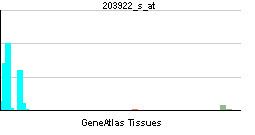Species Human Entrez 1536 | Human Mouse Ensembl ENSG00000165168 | |
 | ||
Aliases CYBB, AMCBX2, CGD, GP91-1, GP91-PHOX, GP91PHOX, IMD34, NOX2, p91-PHOX, cytochrome b-245 beta chain External IDs OMIM: 300481 MGI: 88574 HomoloGene: 68054 GeneCards: CYBB | ||
Cytochrome b-245 heavy chain also known as cytochrome b(558) subunit beta or NADPH oxidase 2 or Nox2 is a protein that in humans is encoded by the CYBB gene. The protein is a super-oxide generating enzyme which forms reactive oxygen species (ROS).
Contents
Function
Nox2, or Cytochrome b (-245) is composed of cytochrome b alpha (CYBA) and beta (CYBB) chain. It has been proposed as a primary component of the microbicidal oxidase system of phagocytes.
Also, many of the functions for Nox2 are linked through the many functions of NADPH oxidase since Nox2 is one of the several isoforms of the gp91phox catalytic subunit of NADPH oxidase.
There has been recent evidence that shows that it plays an important role in atherosclerotic lesion development in the aortic arch, thoracic, and abdominal aorta.
It has also been shown to play a part in determining the size of a myocardial infarction due to its connection to ROS which play a role in myocardial reperfusion injury. This was a result of the relation between Nox2 and the signalling towards neutrophil invasion. Also, it increases golbal post-reperfusion oxidative stress probably due to decreased STAT3 and Erk phosphorylation.
As well, it appears that hippocampal oxidative stress is increase in septic animals due to the actions of Nox2. This connection also came about through the actions of the chemically active ROS which work as one of the main components that help in the development of neuroinflammation associated with Sepsis-associated encephalopathy (SAE).
Lastly, due to recent experiments, it seems that Nox2 also plays an important role in angiotensin II-mediated inward remodelling in cerebral arterioles due to the emittance of superoxides from Nox2-containing NADPH oxidases.
Clinical significance
CYBB deficiency is one of five described biochemical defects associated with chronic granulomatous disease (CGD). In this disorder, there is decreased activity of phagocyte NADPH oxidase; neutrophils are able to phagocytize bacteria but cannot kill them in the phagocytic vacuoles. The cause of the killing defect is an inability to increase the cell's respiration and consequent failure to deliver activated oxygen into the phagocytic vacuole.
Since Nox2 was shown to play a huge part in determining the size of a myocardial infarction, this transforms the protein into a possible future target through drug medication due to its negative effect on myocardial reperfusion.
Recent evidence highly suggests that Nox2 generates ROS which contribute to reduce flow-mediated dilation (FMD) in patients with periphery artery disease (PAD). Scientists have gone to conclude that administering an antioxidant helps with inhibiting Nox2 activity and allowing in the improvement of arterial dilation.
Lastly, targeting Nox2 in the bone marrow could be a great therapeutic attempt at treating vascular injury during diabetic retinopathy (damage to the retina), because the Nox2-generated ROS which are produced by the bone-marrow derived cells & local retinal cells are accumulating the vascular injury in the diabetic retina area.
Interactions
Nox2 has been shown to interact directly with podocyte TRPC6 channels.
